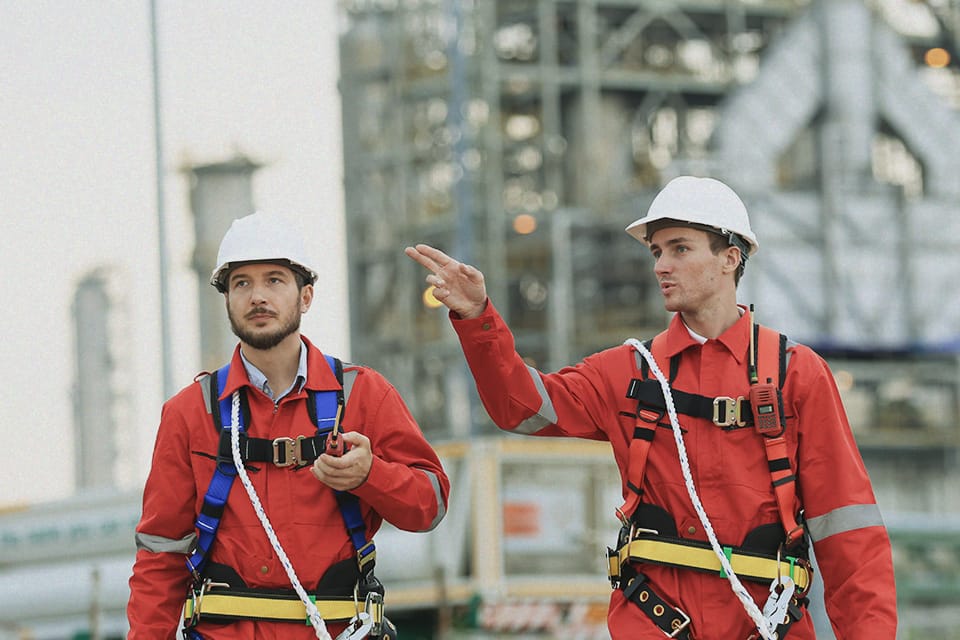
Response Training: A Guide to Pipeline Safety

Imagine working in an environment where the margin for error is slim and the stakes are sky-high. This is the daily grind for midstream oil and gas workers, where danger is just part of the job description. This brings us to the cornerstone of industrial safety – response training to boost pipeline safety. With incidents that could not only halt operations but also pose significant risks to personnel and environments, having a robust understanding and skill set in managing such situations is crucial.
In today’s world that never seems to slow down, knowing how to handle potential hazards can really set you apart. So let’s explore how this specialized training equips teams with essential skills, preparing them for any challenges they might encounter along their pipelines.
Understanding Response Training
Learning how to respond safely if something goes wrong with a pipeline is super important in the oil and gas world. It’s not just about complying with regulations; it’s about protecting lives and the environment. This training equips professionals with the knowledge and skills they need to handle emergencies effectively. From understanding the characteristics of different pipeline systems to learning how to respond to leaks and spills, pipeline safety response training covers a wide range of topics.
The Importance of Pipeline Safety and Response Training
When things go sideways with pipelines, the fallout can be pretty massive. That’s why it’s crucial for professionals in the field to undergo comprehensive safety response training.
Proper training can help prevent incidents from occurring in the first place. And when incidents do occur, well-trained professionals are better equipped to respond quickly and effectively, minimizing the impact on people and the environment.
Key Components of Effective Training Programs
An effective pipeline safety response training program should cover a wide range of topics. It’s not just about memorizing procedures; it’s about developing a deep understanding of pipeline systems and how to respond to emergencies.
The foundation of any training program is the right training content. Participants should learn about the different types of pipelines, their components, and how they work. They should also learn about the various pipeline hazards, such as leaks, spills, and explosions.
Practical Skills
Theoretical knowledge is important, but it’s not enough on its own. Participants should also have the opportunity to develop practical skills through hands-on skills training. This might include learning how to use specialized equipment, such as gas detectors and emergency shut-off valves.
Scenario-Based Learning
One of the most effective ways to prepare for emergencies is through scenario-based learning. This involves presenting participants with realistic scenarios and asking them to respond as they would in a real emergency. With scenario-based learning, folks get to put their book smarts and hands-on skills to the test in a space that’s safe and controlled. It also helps them develop critical thinking and decision-making skills that are essential in real-world emergencies.
Regulatory Frameworks Governing Pipeline Safety
Pipeline safety is heavily regulated in the United States. There are numerous federal and state regulations that govern pipeline operations and safety training requirements. The primary federal agency responsible for pipeline safety is the Pipeline and Hazardous Materials Safety Administration (PHMSA). PHMSA establishes and enforces safety standards for pipeline design, construction, operation, and maintenance.
PHMSA also requires pipeline operators to develop and implement comprehensive safety management systems. These systems must include procedures for emergency response, incident investigation, and continuous improvement.
State Regulations
In addition to federal regulations, many states have their own pipeline safety regulations. Sometimes, local rules can be a bit tougher than the ones from up top, packing in extra stuff like more safety training and steps for responding to emergencies. Pipeline operators must comply with both federal and state regulations to ensure the safety of their operations. Failure to comply with these regulations can result in significant fines and penalties.
Challenges in Response Training
Learning how to respond safely if something goes wrong with pipelines is super important, but it comes with its own set of hurdles. Companies often run into challenges when they try to put together effective training programs that really hit the mark.
One of the biggest challenges is finding the time and resources to conduct training. Pipeline operations are often 24/7, making it difficult to schedule training courses without disrupting operations.
Organizations may also struggle to allocate sufficient resources to training, particularly if they are facing budget constraints. But here’s the thing: pouring some time and effort into training is a no-brainer if you want to keep pipeline operations running smoothly and dodge those expensive mishaps.
Ensuring Relevance and Engagement
We face another hurdle in ensuring that the training hits the mark – it must grab participants’ attention and truly stick with them. Learning the ropes of pipeline safety training can be a bit tricky and heavy on the technical side, which often makes it tough to keep everyone interested and eager to learn.
To overcome this challenge, organizations may need to invest in innovative training methods, such as a program including VR simulations and gamification. It’s also crucial to adjust the learning strategy so it fits just right with what each participant needs and how they learn best.
Future Trends in Pipeline Safety and Response Training
As tech keeps marching forward and the rules of the game change, it’s clear that our approach to training for pipeline safety needs to stay on its toes. Here are some of the trends that are likely to shape the future of pipeline safety training:
Technology will continue to play an increasingly important role in pipeline safety training. VR simulations, online learning platforms, and other technologies will become more sophisticated and widely used. These technologies will allow organizations to provide more immersive and engaging training experiences while also reducing costs and increasing accessibility.
Greater Emphasis on Human Factors
While technology is important, it’s not the only factor in pipeline safety. Let’s not forget the human touch in all of this – how we talk to each other, work together, and make choices is just as important. Looking ahead, the way we teach safety in pipeline work might shift to really hone in on those essential soft skills. This could include training on effective communication, leadership, and stress management.
Increased Collaboration and Knowledge Sharing
As the pipeline industry becomes more complex and interconnected, collaboration and knowledge sharing will become increasingly important. Organizations may need to work together to develop and share best practices for pipeline safety and emergency response. We might also see the rise of shared standards and guidelines across the industry, along with spaces where folks can swap stories and advice.
How to Choose the Right Pipeline Safety Response Training Program
With so many pipeline safety response training programs available, it can be challenging to choose the right one for your organization. Here are some factors to consider when selecting a training program:
One of the first things to look for in a training program is accreditation and certification. Programs that are accredited by recognized organizations, such as the International Association of Drilling Contractors (IADC) or the American Petroleum Institute (API), have met rigorous standards for quality and effectiveness. Getting certified matters too, because it shows everyone that you’ve got the skills and know-how up your sleeve. Make sure you go for programs that hand out certificates everyone in the field knows and nods to.
Curriculum Relevance
Another important factor to consider is the relevance of the curriculum to your organization’s specific needs. So, when it comes to running different pipeline systems and operations, you’ll find that each one might need its own special kind of training. Scout for programs that let you mix and match courses to meet the specific needs of your team. The curriculum should also be up-to-date and reflect the latest industry standards and best practices.
The way we teach in a training program can really make or break its success.
Look for programs that use a variety of instructional methods, such as classroom lectures, hands-on exercises, and scenario-based learning. The program should also incorporate adult learning principles, such as active participation, problem-solving, and real-world application. Instructors should be experienced and knowledgeable, with a proven track record of success in the industry.
Flexibility and Accessibility
Finally, consider the flexibility and accessibility of the training program. Look for programs that offer a range of delivery options, such as in-person, online, or blended learning.
The program should also be accessible to participants with different learning styles and abilities. This may include providing accommodations for participants with disabilities or offering training in multiple languages. By considering these factors, organizations can choose a pipeline safety response training program that meets their specific needs and ensures the safety and effectiveness of their pipeline operations.
The Best Response Training Requires the Industry’s Premier Safety and Compliance Solutions
The journey through learning about response training and pipeline safety has been nothing short of enlightening. It isn’t just about following protocols; it’s about fostering a culture of vigilance, preparedness, and the best learning environments that permeate every level of operation.
We’ve discovered that diving into the latest tech and sticking to tough rules are key in crafting training programs that really work. Plus, looking at how other successful projects have navigated through common hurdles can really open our eyes to some golden tips and tricks for hitting our own targets.
In essence, committing to comprehensive pipeline safety response training isn’t merely an option—it’s imperative for ensuring workplace efficiency, environmental protection, and above all else—human life preservation.
However, the best response training is only a part of the equation. To maximize worksite safety, midstream oil and gas companies must partner with a provider offering the proper risk management, Operator Qualification platforms, and subject matter experts to guide them through the process.
Consider working with us to configure a solution that complements your existing programs and maximizes pipeline safety.
Contact us today to learn more.




